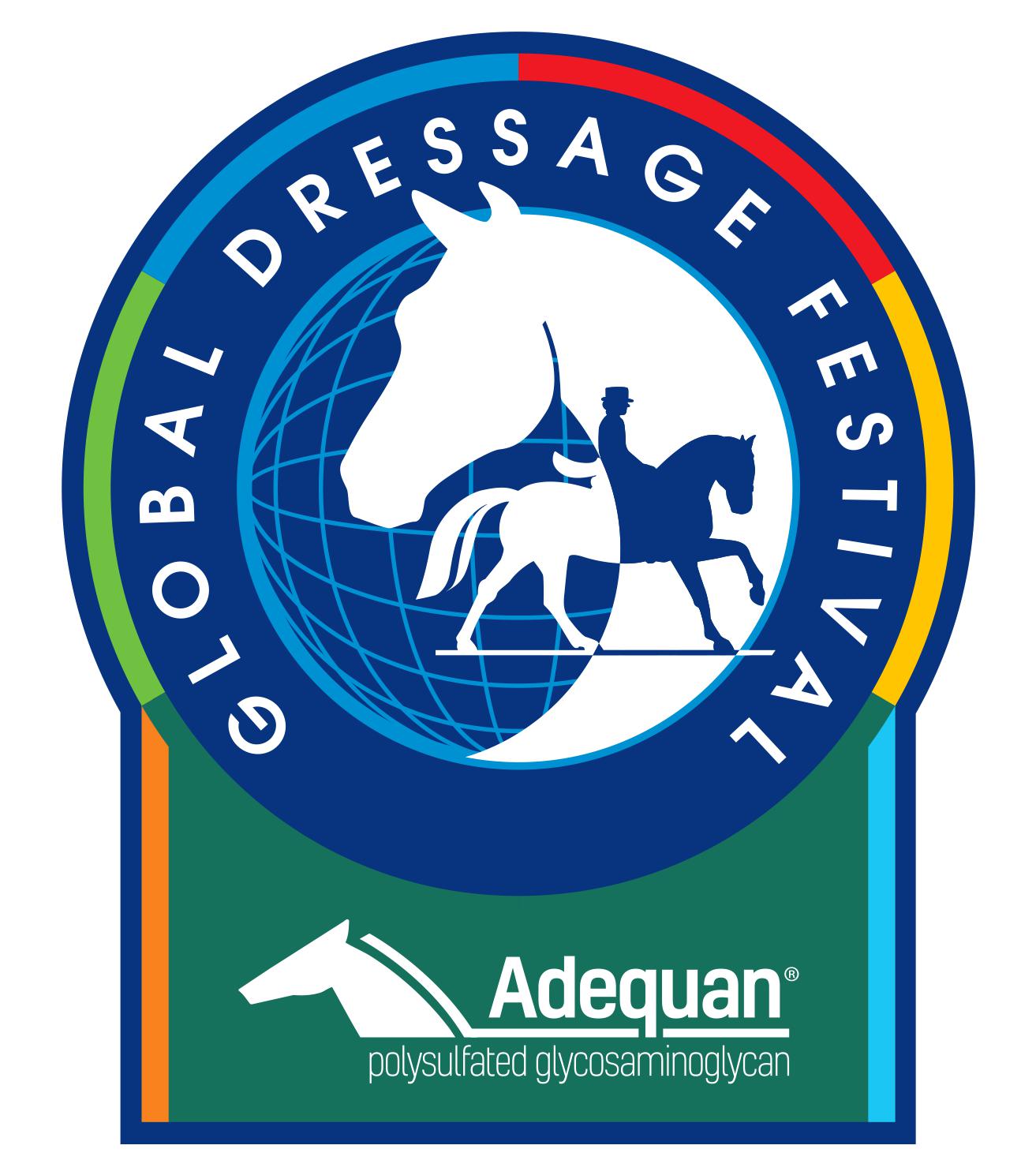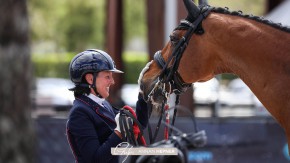Dressage 101
Attending a horse show can feel like stepping into a whole new world. We’ve put together a guide to some of the sights, sounds, and terms you might come across at equestrian events so that you can get the most out of your experience at the Winter Equestrian Festival and Adequan® Global Dressage Festival (AGDF).
What types of competition will I see at AGDF?
AGDF is home to the world’s largest international dressage circuit, running eight consecutive weeks and showcasing some of the best rider and horse combinations in the world. The modern day sport of dressage originates from ancient methods implemented to train military and cavalry horses centuries ago. Now recognized as one of three equestrian Olympic disciplines, dressage is considered by many to be a form of art as rider and horse must work in unison to perform difficult movements with athleticism, precision, and harmony.
How are dressage events judged?
International dressage competitions are performed in a regulation sized arena (20mx60m) with governing bodies representing the United States Equestrian Federation (USEF) and the International Equestrian Federation (FEI) overseeing equipment and apparel use. Judges of international competition are licensed by the FEI and are assisted by scribes who note comments and scores from the judges during a rider’s test.
A panel of five judges placed in separate locations around the arena for optimal viewing angles score each individual movement performed by a horse and rider combination. Each horse and rider performs a designated test based on balance, suppleness, and correctness. Competitors must complete the test, which vary by competition level, composed of specific patterns and movements with the use of ten letters located on the perimeter of the arena as directional guidelines.
Movements are scored on a 0-10 scale with a score of 0 indicating a failure to complete the designated movement, while a score of 10, rarely given in competition, refers to perfect execution of a movement or pattern. The total points awarded throughout the test are added up at the conclusion of the ride and are converted to a percentage, dividing the points earned by the points available in the specific test. Percentages from 65% and above are considered efficient for each level and indicate proficiency of both horse and rider combination.
Riders are also awarded with five categories of Collective Marks, which include scores for Gates, Submission, Impulsion, Rider’s Seat and Position, and Rider’s Correct and Effective Use of Aids. These are also scored on a 0-10 scale, which are factored into the total awarded points during an individual’s test.
“The Origins of Dressage”
An Article by Barbara (Bebe) Davis
Dressage is the oldest of equestrian sports, dating back to the Renaissance and having its foundation in classical Greek horsemanship. The sport was developed to prepare war horses for battle. The object of dressage is the development of the physical ability of the horse, resulting in a supple, calm, and flexible animal that is confident and in perfect harmony with his rider.
The origins of classical dressage lie in the natural ability of the horse and its movements in the wild. In fact, most modern definitions state that the objective of dressage is to have the horse perform under saddle with the degree of athleticism and grace that it naturally shows when free.
Classical dressage masters observed the horse’s natural ability to move sideways, turn quickly, leap, pirouette, and piaffe. When taught to do these movements on command from a rider, the horse became invaluable in battle. The movements and training in general were used to strengthen the war horse’s body and mind and make him a supreme athlete.
Cavalry soldiers trained their horses to be sure-footed, agile mounts that could easily maneuver out of difficult situations. Men primarily rode stallions into battle because they were thought to be braver and more aggressive. They also tended to show more aptitude for pirouettes, piaffe, passage, and moving sideways.
Each movement had a specific purpose; the piaffe could be used to trample an adversary, the passage could allow a horse to step over any obstacles in the battle field, a pirouette could turn you to, or from, the enemy, making it easier to fight multiple people at one time or allowing a soldier to quickly escape an attacker, and the Flying Lead Changes were necessary to maneuver around the battle field.
A horse’s gaits were also very important. For example, a horse with a large sweeping walk would arrive to the battle before a horse with a short and tight walk. This would allow both horse and rider time to recover from their long journey before starting to fight. A horse with a big canter stride can easily out run a horse with a small canter stride when both horses are exerting the same amount of effort. The trot was also quite important because it was the gait that was primarily used for training. The trot taught the horse straightness and suppleness and the ability to push equally from both hind legs to both reins.
Each horse is gifted with his own specific gaits, and according to classical dressage trainers, every horse no matter his quality of gaits can perform and benefit from dressage.







 Copyright © 2022 · All rights reserved · ShowGrounds, LLC. · Shelburne Falls MA · 1-888-429-9495
Copyright © 2022 · All rights reserved · ShowGrounds, LLC. · Shelburne Falls MA · 1-888-429-9495